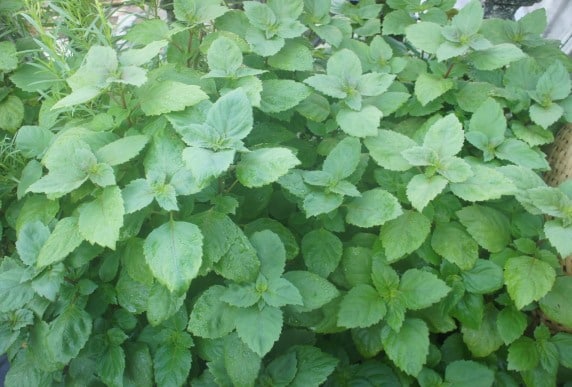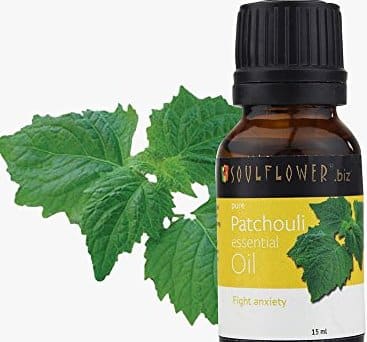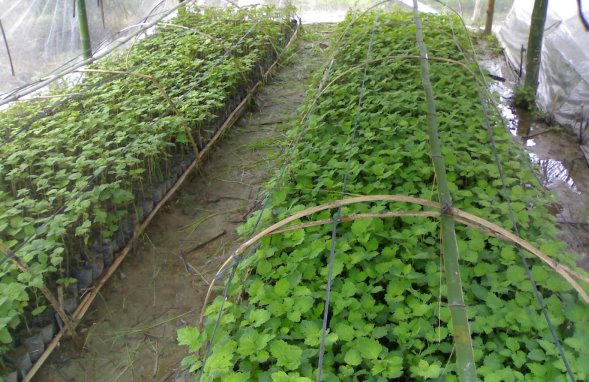Patchouli Farming Guide:

Introduction of Patchouli Farming:- Patchouli is an aromatic crop mainly grown for its oil used in the manufacture of perfumes, cosmetics, tobacco, soaps, medicines, beverages. Basically, Patchouli is native to Philippines. When it comes to plant description, Patchouli is a perennial, small bushy herb of the mint family, with erect stems, reaching up to three feet tall and bearing small, pale pink-white flowers and yields fragrant leaves containing very sweet smelling oil. However, most Asian countries are cultivating commercially due to increasing demand for this essential oil. The essential oil extracted from this plant is expensive and available at Rs.1,200 to 1250 per kg in the market. In India, Central Institute of Medicinal and Aromatic crops (CIMAPS) in Lucknow have developed a high yielding Patchouli variety called “Samarth”. As demand exceeds supply of Patchouli, there is a space for decent profits in Patchouli cultivation. In the following write-up, let us discuss in detail about growing Patchouli crop. Patchouli herb is commercially cultivated in the following countries; China, Indonesia, Cambodia, Myanmar, India, Maldives, Malaysia, Mauritius, Seychelles, Madagascar, Taiwan, Philippines, Thailand, Vietnam, South America & Caribbean.
Family Name of Patchouli:- “Lamiaceae”.
Botanical/Scientific Name of Patchouli:- “Pogostemon cablin”.
Uses and Health Benefits of Patchouli:- The following are some of the health benefits and uses of Patchouli plant and its oil.
Parts used: Leaves and Oil.

- It is being mainly used in perfumes, soaps and tobacco products.
- Patchouli leaves are being used to make an herbal tea.
- Patchouli herb is used in Ayurveda medicine.
- Patchouli oil works as Anti-depressant.
- Patchouli helps soothing inflammation.
- Patchouli oil has great Anti-septic properties.
- Patchouli oil works as a great astringent.
- Patchouli oil helps in healing cuts and wounds quickly.
- Patchouli oil has great deodorant properties.
- Patchouli oil helps in losing weight.
- Patchouli oil works as a fungicide and Insecticide.
- Patchouli oil helps in the treatment of eczema, dermatitis, psoriasis & sores.
Local Names of Patchouli in India:- Patchouli, Pehpli (Hindi), Kadir pachai (Tamil),Patchetene (Kannada), Pedda tulasi (Telugu),Pachila, Kattam (Malayalam), Patra, Gandhaparta (Sanskrit), Pachapat (Bengali), Panch (Marathi), Pacha, Sugandhi pandi (Gujarati).
Varieties of Patchouli:- Java, Johore, Singapore and Indonesia are most commonly cultivated varieties of Patchouli. Johore type yields the quality oil whereas the other two give high yield of oil. In India, Central Institute of Medicinal and Aromatic crops (CIMAPS) have developed a high yielding variety called “Samarth”.
Climate Requirement for Patchouli Farming:- Patchouli crop can be grown up to an altitude of 900 to 1100 meters above msl (mean sea level). Usually, Patchouli plants prefer humid and warm climatic conditions. This crop thrives well on a heavy and evenly distributed annual rain fall ranging from 150-325 cm. In case of less rainfall areas, one can cultivate this crop under irrigated conditions. A temperature range of 25-30°C and humidity range 70-75% are suitable for its growth.
Soil Requirement of Patchouli Farming:- Patchouli can be cultivated in wide range of soils. However, a deep soil rich in organic matter with loose friable texture is ideal for plant growth. The optimum soil pH of 5.5 to 6.0 is recommended. Commercial crop growers should go for soil test to find out the fertility and based on results, soil should be supplemented with required nutrients and micro-nutrients.
Propagation in Patchouli Farming:- Patchouli crop is usually propagated by rooted cuttings (vegetatively propagated) grown in a nursery.
Nursery Raising of Root Cuttings:- The first three pairs of leaves of the cuttings should be carefully removed and planted in the nursery beds at a spacing of 3 cm distance. These leaves of cuttings need to be watered by hand and provided with shade. Generally, they start rooting in about 5 weeks. These cuttings will be ready for transplanting in 9-10 weeks in the main filed. Earthen pots and polythene bags can also be used for raising the nursery stock.

Land Preparation, Planting, and Spacing in Patchouli Farming:- Well, land preparation of any crop plays major role in getting good yields. The soil should be brought to fine tilth stage by giving couple of deep ploughings followed by harrowing. The main field should be thoroughly disced and tilled so that soil can reach friable stage and any unwanted weeds can be destroyed. For enriching the soil fertility, it is better to add 15 to 20 tonnes of well-decomposed farm yard manure (FMY) like cow dung in the soil and this should be applied in the last ploughing. Suitable nematicide like asanit @ 150 kg/ha should be broadcasted and mixed well into the soil before (few days) transplanting the rooted cuttings in the field. The filed should be made into ridges and furrows. The ridges should be 20-25 cm high and 18-21 cm broad with a spacing of 60 cm between the rows. Make sure to irrigate the beds a day before the transplanting the rooted cuttings.Rooted cuttings raised in nurseries should be transplanted in the field. The planting should be done at 60 x 60 cm apart and the plant density of 28,000 rooted cuttings (plants) is required per hectare.
Irrigation in Patchouli Farming:- Proper and timely irrigation in any crop ensures better produce and high yields. Generally, Patchouli crop is grown as rain-fed crop in hills. Don’t forget to irrigate the field immediate after transplanting.. In Plains, it requires irrigation for every 3 days during first 45 days. Subsequent irrigation should be given at 8 to 10 days interval.
Manures and Fertilizers in Patchouli Farming:- Patchouli crop responds very well to manures and fertilizers. A well-decomposed farm yard manure (FMY) of 5 to 6 tonnes/acre or 15 to 16 tonnes per hectare should be applied along with the N:P:K ratio of 60:20:20 (N:P205:K2O per acre) or 150:50:50 (N:P205:K2O per hectare cultivation).
Intercultural Operations in Patchouli Farming:- Weed free field is essential throughout the growth period of Patchouli. After transplanting the root cuttings, carry out two weedings during early stages. Earthing up should be done along with top-dressing after every harvest of crop.
Pests and Diseases in Patchouli Farming:- The following are the common insect-pests and diseases found in the Patchouli farming.
- Insect-Pests: Root knot nematode.
- Control Measures: Furadon @ 20 kg per ha should be applied for effective control.
- Diseases: Leaf blight.
- Control Measures: Application of 2 sprays of Dithane Z-78 0.5%, at one-month interval is the recommended to control the leaf blight disease.
Note: It is always advised to contact your local horticulture department for symptoms of diseases and pests and their control measures in Patchouli farming.
Harvesting in Patchouli Farming:- The first crop is ready for harvesting 4 to 6 months after transplanting and subsequent cuttings can be taken after every 3-4 months. The ideal time for harvesting the Patchouli leaves is when the leaves turn to pale green or slightly brown. Usually Patchouli crop can be maintained for 3 to 4 years. Make sure to harvest the leaves early morning hours or cool evening hours to avoid loss of loss of essential oil. Cutting should be taken on young shoots of 30-50 cm in length (containing at least 3 pairs of matures leaves).
Post-Harvest Tasks in Patchouli Farming:-
- Curing: After cutting, the stem and leaves should be spread out for curing in thin layers on a hard dry surface in sheds, allowing free circulation of air. Generally, it takes 3 to 4 days for drying. For better oil yield, proper drying is very important after harvesting. Make sure that there won’t be any fermentation during drying period. Properly dried material is pressed into bales and stored in a cool dry place till distilled.
Yield in Patchouli Farming:- Yield depends on many factors like variety, soil, climate, type of propagation, age of the plant and other farm management practices. Under ideal conditions, one can obtain a yield of 2 tonnes dried leaves and 60 kg of oil per 1 hectare area (The oil is found mainly in the leaf and small quantity may present in the tender parts of the stem).
Economics of Patchouli Farming:- Well, cost and profit in Patchouli farming depends on many factors. On an average, the cost of cultivation in one hectare is about Rs.40,000 and farmers can expect a net return of about Rs.70,000 during the first year.
Marketing of Patchouli:- Contact any perfumery industry, cosmetic companies or herbal company for bulk sale at the farm gate.
Respected Sir/Madam, Thanks for the Patchouli information.
Where do I get this plant? I want to buy it. Thanks in advance
Regards,
Sarika Pawar
Hi Mr.Jagadish Reddy ,
Nice information about Patchouli.
I am in USA and came across some of my friends are regularly using Patchouli oil as Scent.
I was astonished that these plants are grown even in Karnataka .
Where are the places in Karnataka we can cultivate Patchouli plants.
I am interested in cultivating the Patchouli in Karnataka .
We procure patchouli and do contract cultivation
Contact us for information
Hello, I’m in Ivory Coast (West Africa). I’m interested in cultivating Patchouli in my country.
Can you provide me cuttings of Patchouli?
Best regards.
Re Patchouli contract cultivation. Please let me know wherwe you are and how you could be contacted.
Mymail id is – vjkmsamuel53at gmail dot com.